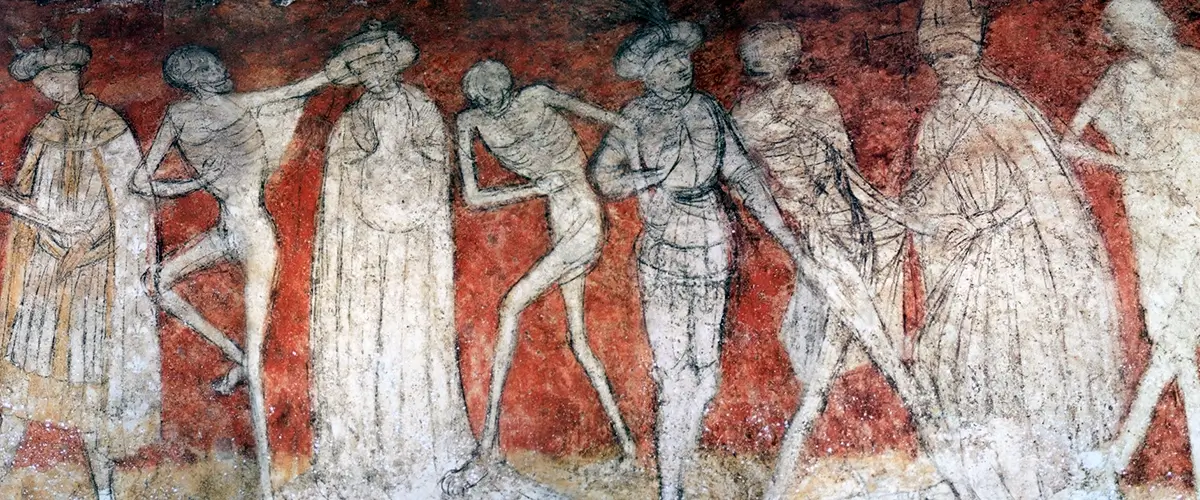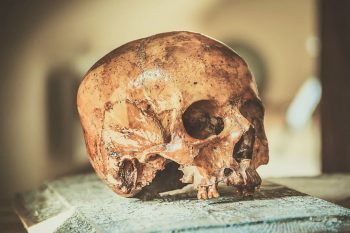What is Macabre?
The word “macabre” comes from the French word “macabre,” which was originally used to describe a genre of medieval dance in which a person representing Death led a procession of others to the grave. This dance was often performed in a slow and solemn manner, with participants dressed in skeleton costumes and carrying symbols of death, such as bones or scythes.
The word “macabre” gradually took on its current meaning of being an adjective for “gruesome” or “horrifying” in reference to death or violence, and is now used in a variety of contexts to describe a range of subjects and situations that evoke feelings of fear, revulsion, or horror.
It often refers to a strong interest in death and mortality, and can be used to describe a style of art or literature that portrays death and the supernatural in a frightening or disturbing way. The word is often used to describe a situation or subject that is gruesome, eerie, or creepy, and has a feeling of being dark, frightening, or sinister.
History of the macabre
The macabre has a long and rich history that spans back to ancient times, when people had a strong fascination with death and the afterlife. This fascination has been expressed in various forms of art, literature, and culture throughout history.
One of the earliest examples of the macabre can be found in the medieval dance of death, also known as the “Danse Macabre,” which was a popular theme in art and literature during the 14th and 15th centuries. This dance depicted Death leading a procession of people from all walks of life to the grave, and served as a reminder of the transience of life and the inevitability of death.
During the Enlightenment, the macabre took on a more scientific and rational tone, as people sought to understand the mysteries of death and the human body through anatomy and medical studies. This interest in the macabre can be seen in the works of authors such as Mary Shelley, Edgar Allan Poe, and H.P. Lovecraft, who created some of the most enduring works of horror and terror in the 19th and 20th centuries.
In the 20th century, the macabre became an even more prominent part of popular culture, with the rise of horror films and other forms of popular entertainment that capitalised on people’s fascination with the frightening and unusual. Today, the macabre continues to be a popular subject in art, literature, and popular culture, with new works of horror and terror being created all the time.
Current interests related to the macabre
Some of the macabre interests that are popular today include:
Dark tourism: This involves visiting sites that are associated with death, violence, or tragedy, such as battlefields, graveyards, or former concentration camps.
True crime: This involves an interest in real-life crimes, especially those that are particularly brutal, violent, or mysterious.
Horror movies and TV shows: These often feature themes of death, violence, and the supernatural, and can be particularly popular among people who enjoy being scared or thrilled by the macabre.
Gothic and alternative fashion: This can involve clothing and accessories that are inspired by death and the supernatural, such as black clothing, skull motifs, and other dark or eerie symbols.
Death-themed music and art: This can include music that is inspired by death and the macabre, such as death metal, gothic rock, and horror-themed classical music. It can also include visual art that portrays death, violence, or the supernatural in a dark and eerie way.
These interests are not necessarily harmful or problematic, even though some may view them more critically than others. Many people find them to be a form of creative expression or a way to explore their own feelings about mortality and the unknown.
However, some people may find these interests to be distasteful or offensive, and it’s important to be respectful of others’ opinions and to approach these interests with sensitivity and caution.
The psychology of the macabre
The psychology of the macabre is a complex and multifaceted subject that has attracted the attention of many researchers and psychologists over the years.
Some of the key factors that contribute to people’s fascination with the macabre include:
Fear and awe: People may be drawn to the macabre because it evokes feelings of fear and awe, which can be both thrilling and cathartic. This can help people to confront their own mortality and to better understand their own emotions and fears.
The unknown: The macabre often involves themes of death and the supernatural, which can be both mysterious and fascinating to people. By exploring these subjects, people may feel as though they are gaining a greater understanding of the unknown and the mysteries of life and death.
The thrill of fear: Some people enjoy being scared, and the macabre provides a safe and controlled way to experience fear and excitement. This can be especially true for people who enjoy horror movies, haunted attractions, and other forms of dark entertainment.
A sense of control: By engaging with the macabre in a safe and controlled environment, such as through art, literature, or entertainment, people may feel as though they are in control of their own emotions and reactions. This can help to provide a sense of comfort and security in the face of fear and the unknown.
A form of creative expression: For some people, the macabre provides a way to express their creativity and imagination in a unique and meaningful way. This can be especially true for artists, writers, and musicians who use the macabre as a source of inspiration for their work.
When might your interest in the macabre be too much?
An interest in the macabre can be considered too much when it begins to interfere with a person’s ability to function in their daily life. For example, if someone’s fascination with the macabre becomes so intense that it begins to impact their relationships, work, or health, then it may be a sign that their interest has become problematic.
Additionally, if someone’s fascination with the macabre becomes so intense that it causes them to engage in harmful or illegal behaviours, then it is definitely a sign that their interest has become problematic. For example, if someone becomes obsessed with true crime and begins to stalk or harass real-life victims or their families, or if someone becomes so fixated on death and violence that they begin to contemplate or plan acts of violence themselves, then their interest in the macabre has become a cause for concern.
It’s important to seek help if you or someone you know is experiencing these types of difficulties. A mental health professional can help you to better understand your motivations for engaging with the macabre and can provide you with strategies for managing your thoughts and behaviours in a healthy and productive way.

